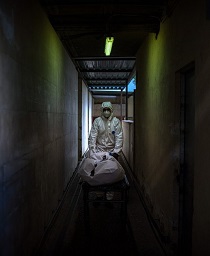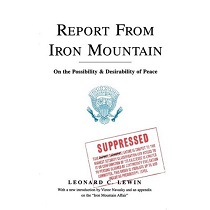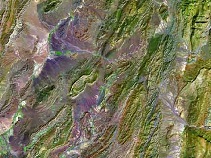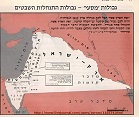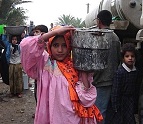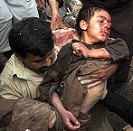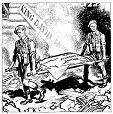Killing each Taliban soldier costs $50 Million; Killing each NATO soldier costs $50 Thousand

The West simply cannot afford to continue to fight the Taliban.
The military-industrial complex is a voracious beast that demands its daily fix at the trough of the American taxpayers.
It costs $50 thousand to kill each NATO soldier while it costs $50 million to kill each Taliban soldier. It is therefore 1,000 times cheaper to kill a NATO soldier; a fact that does not seem to bother the Pentagon, NATO’s leadership or European defense ministers.
Kabul Press, on September 30, 2010, published an article by this author detailing the best estimate of Taliban killed per year (2,000) divided by a portion of the direct costs that the Pentagon is spending each year in Afghanistan ($100 billion). The resulting statistic suggests that it costs $50 million to kill each Taliban soldier. This number is very conservative. If all NATO and American costs (direct and indirect) were included, the analysis would reveal that it actually costs about $150 million.
The present article examines spending from the Taliban side in order to comparatively determine what it costs to kill each NATO soldier. The Brookings Institution is the consulting firm with the best political access to the Obama Administration and the U.S. State Department. In September 2009, it published a report on Taliban annual revenue, based in part on data gathered by the Congressional Research Service. Brookings estimated Taliban annual income at between $140 and $200 million. The Taliban have already inflicted over 600 deaths on NATO soldiers and more than twice that number of fatalities on Afghan army and police personnel. By the end of the year, total Coalition deaths are expected to reach 3,000. The math is unfortunately easy. Assuming Taliban revenue of $150 million divided by 3,000 = $50,000 to kill a NATO, American or Afghan soldier.
Pentagon spokesman Lt.Col. John L. Dorrian, in reacting to these metrics, told Bill Morris of AOL News that the Kabul Press was using “simplified logic” (which is true). But “simple” does not in any way mean inaccurate. These calculations remain useful tools for evaluating Pentagon practices.
The Pentagon does not like the metrics created by this author because they reveal incredible waste in the NATO and the Pentagon war effort. Both entities, and the individual countries that have contributed troops to Afghanistan, seem oblivious to the global economic crisis. They are spending their citizens’ tax money like drunken sailors on a two-day pass.
For example:
● A half billion dollars has been allocated towards supplying one year of temporary electricity to parts of Kandahar. This “Potempkin village” exercise, which is not sustainable, is designed to show the illusion of progress.
● NATO, according to The New York Times, is using more than a million gallons per day of gasoline and diesel at an imported cost of more than $300.00 per gallon.
● The United States Government has paid over $3 billion to some questionable companies in Kyrgyzstan, to supply jet fuel to the Manas air base, which is a focal point for ferrying NATO troops and high-value equipment into Afghanistan. Within one 24 hour period on February 18, 2010, Manas air base used an incredible 544,758 gallons of jet fuel. In August 2008, the U.S. Army awarded a $720 million contract, sole-source (i.e., with no competition) to “Red Star Enterprises, Ltd.” It and other companies were reported to have links to the ruling families in the country, and the contract payments to them were understood to be indirect bribes, even though such would violate the U.S. Foreign Corrupt Practices Act. The full direct and indirect costs of meeting the extravagant logistics needs of the NATO forces in Afghanistan are not known.
● Over 150,000 civilian contract personnel are currently cooking for, cleaning for, working for and supporting NATO forces in Afghanistan. That amounts to each soldier having the equivalent of at least one personal servant. This level of luxury has never been seen in warfare.
● Kabul Press has published dozens of investigative reports detailing extensive fraud, waste and mismanagement by the Pentagon, ISAF, USAID and the U.S. Embassy in Kabul. Additional dozens of reports have been published by the Special Inspector General for Afghanistan Reconstruction (SIGAR). To date, no one has been held accountable. The lack of fiscal responsibility within NATO and the U.S. agencies within Afghanistan is stunning.
This author published a story on September 26, 2010, entitled “Afghan Girl Killed by Reckless U.S. Mortar Fire.” It recounts an incident last July in which an insurgent in Marjah fired fire cents worth of bullets at U.S. Marines and then disappeared. The Marines, in return, fired a barrage of mortars which killed a local 14 year-old girl. The article details that the mortar rounds cost (in total) more than $10,000 to purchase. This does not include the shipment costs to Afghanistan, which may have doubled or tripled that cost. This one episode, in which the Taliban spends pennies while NATO wastes $10,000, sums up the problem.
In conclusion, the metrics developed by this author highlight in graphic detail a level of spending by NATO forces that is both obscene and unnecessary when compared to the spending by the Taliban. NATO troops are (thankfully) difficult to kill, but when they are killed the cost is tragically cheap. NATO has, to date, been given a blank check to spend whatever it wants. That cannot continue.
For every operation or raid that NATO launches in Afghanistan, the international media should be examining the costs vs. the benefits and asking: “What did that operation or raid cost?” What were all the direct and indirect costs, including wear and tear on equipment? The answers would reveal that, unless there is massive reform in the way NATO armies wage war, the West simply cannot afford to continue to fight the Taliban.
___________________________________________________________________________________
URL: http://www.a-w-i-p.com/index.php/2010/11/08/killing-each-taliban-soldier-costs-50-mi-1

